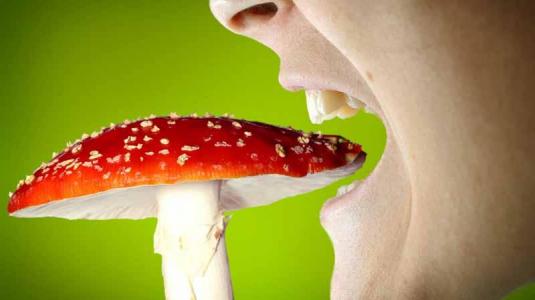Mushroom poisoning is a disease caused by fungal toxins (mycosis).Mushroom poisoning is always an acute, medical emergency. It is life-threatening and should therefore be treated as soon as possible.
Causes of Mushroom Poisoning:
It comes to mushroom poisoning, if one consumes mushrooms, which contain poisonous substances. The consumption of some toadstools, such as toadstools and green tuberous mushrooms, can even have fatal consequences.Spoiled mushrooms can also lead to fungus poisoning.It is simply caused by the consumption of poisonous mushrooms.
Two groups of toxins are contained in these mushrooms. Cyclic heptapeptides known as phallotoxins cause the violent symptoms of abdominal pain, vomiting, and diarrhea which begin 6 to 15 hours after ingestion. Symptoms then remit for about 48 hours. During this time tests of liver function become abnormal, and signs of hepatic and renal failure then develop, often accompanied by confusion, coma, and paralysis of the extremities.
In the case of fungal poisoning (mycosis), the first symptoms can appear at different rates – within half an hour or even after up to ten days. The late signs of intoxication can be life-threatening due to the associated liver and kidney damage.
The symptoms of fungal poisoning are listed. Common symptoms include:
- Nausea and vomiting
- diarrhea
- Stomach and abdominal pain
- sweating
- dizziness
- Confusion states, perceptual disorders
- Breathing difficulties and shortness of breath
- palpitations
- In-coordination
In case of fungal poisoning (mycetism), the doctor makes the first diagnosis based on the symptoms shortly or some time after eating a mushroom meal or a single mushroom (eg in the forest). It is therefore important to tell the doctor that you have taken mushrooms. It can thus differentiate the symptoms from other illnesses such as food poisoning and gastrointestinal diseases .Ideally, bring with you remnants of the mushroom meal or a sample of vomited stomach contents. The doctor can investigate both of these for toxic remnants of fungus and thus ensure the diagnosis of fungal poisoning.
Therapy And Treatment of Mushroom Poisoning
Mushroom poisoning (myceticism) is an emergency requiring immediate therapy. If you suspect that you have fungal poisoning, you should seek medical attention immediately or contact a Poison Control Center. It makes sense to take vomit and mushroom remnants to the hospital, as this will help you to find out more quickly what type of fungal poisoning it is. In addition, the doctor has the opportunity to quickly find the right remedy for therapy.
The medical treatment of a fungus poisoning depends on the type of poisoning. In mild cases, it is often sufficient to relieve the symptoms . As a check, the doctor regularly checks the breathing, the blood pressure and the pulse. In other cases of fungal poisoning, a gastric lavage and the gift of activated carbon is necessary to remove the fungal toxin from the body. Some poisonous mushrooms also have antidotes, which the doctor can administer.
No specific treatment is available, but the stomach should be emptied by induced vomiting or gastric lavage, and atropine administered if muscarinic effects are observed. Otherwise, the general principles of management in acute hepatic and renal failure should be observed. For example, peritoneal dialysis or hemodialysis may be necessary in renal failure, and modern methods of managing acute hepatic failure may help to reduce the high mortality.
In experimental conditions, the mortality rate in mice poisoned by alpha-amanitin (the principal amatoxin of A. phalloides) is much reduced by administration of a number of agents penicillin and sulfamethoxazole, penicillin and phenylbutazone, and chloramphenicol—which are thought to act by displacing toxin from plasma albumin-binding sites and thus promoting its excretion. Whether this approach to treatment would be useful in human mushroom poisoning is unknown.
Prevention of mushrooming:
Only collect mushrooms that you know for sure ! In case of doubt, do not leave unknown mushrooms behind or do not consume them after sorting.
Let spoiled, too old and madige mushrooms stand.
Buy yourself a good mushroom destination book .
If you have little mushrooming experience, you should only start mushrooming with a sponge under the hat. Many edible mushrooms, such as the chestnut or porcine mushrooms, are part of this family of the pipe-litters, for example. But beware!
Cook the mushrooms long enough.The absolute minimum is 15 to 20 minutes cooking time .
Mushrooms are hard to digest. Therefore, do not eat too much.
